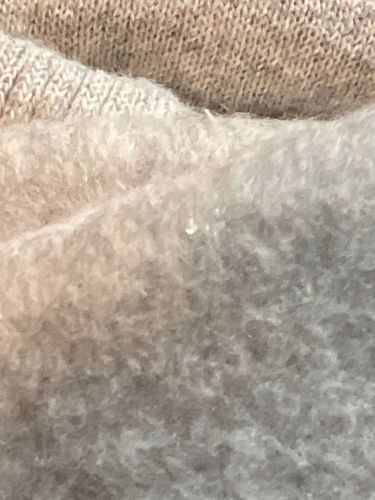Carpet Beetle Larva (likely dermestid beetle larva)
Scientific Name: Dermestidae (various genera, e.g., Attagenus, Anthrenus)
Order & Family: Coleoptera (Beetles), Dermestidae (Skin Beetles)
Size: Larvae typically range from 2-5 mm in length.

Natural Habitat
Indoors, especially in undisturbed areas. They feed on natural fibers like wool, silk, fur, feathers, and dried animal products. Often found in carpets, rugs, upholstered furniture, clothing, and stored food items.
Diet & Feeding
Keratin-based materials (animal fibers like wool, fur, feathers), dried insect remains, dried pet food, cereal products, and other organic debris. They are scavengers.
Behavior Patterns
Larvae are the damaging stage, feeding in dark, undisturbed areas. They molt several times as they grow, leaving behind shed skins. Adult carpet beetles are primarily outdoor insects, feeding on pollen and nectar, but they lay eggs indoors in suitable food sources for their larvae. The larvae move slowly and are often found in secluded spots.
Risks & Benefits
Potential risks: Carpet beetle larvae can cause significant damage to natural fiber textiles, clothing, carpets, and museum specimens. They are not known to bite humans, but some people might experience skin irritation or allergic reactions to their bristles or shed skins. Benefits: In natural environments, they play a role as decomposers, breaking down organic matter.
Identified on: 10/7/2025